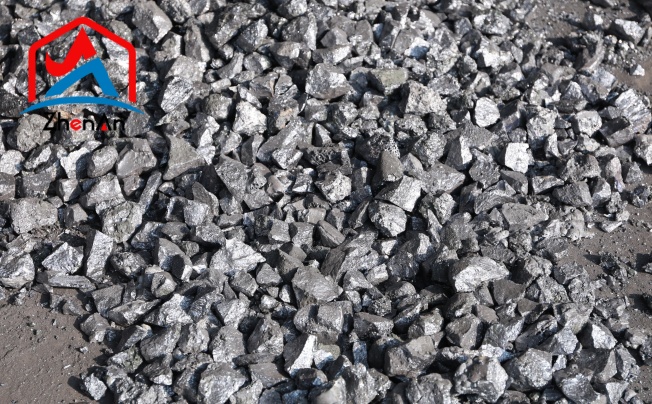Silicon, denoted by the atomic number 14 and symbol Si, is a remarkable chemical element that holds a pivotal role in the realms of science, industry, and technology. Known for its crystalline structure and semiconducting properties, silicon is one of the most abundant elements on Earth, making up around 27.7% of Earth's crust by mass. Its unique characteristics have made it indispensable in various applications across diverse sectors.
Silicon in Solar Energy
Utilization of Silicon in Photovoltaic Cells
Silicon plays a pivotal role in the production of photovoltaic cells, which are the building blocks of solar panels. These cells consist of layers of semiconducting materials, with silicon being the most commonly used due to its abundance and efficiency.
When sunlight hits these cells, it excites electrons in the silicon atoms, creating an electric current that can be harnessed as usable energy. The crystalline structure of silicon allows for a high degree of efficiency in converting solar energy into electricity, making it a preferred material for solar technology.
Contribution of Silicon to the Renewable Energy Sector
The widespread adoption of silicon-based solar panels has significantly contributed to the growth and development of the renewable energy sector. As concerns about climate change and environmental sustainability continue to rise, the demand for clean energy sources like solar power has escalated.
Silicon's role in enabling efficient and cost-effective solar technologies has been instrumental in transitioning towards a more sustainable energy future. By harnessing the power of sunlight through silicon-based photovoltaic cells, we can reduce our reliance on fossil fuels and decrease carbon emissions.
Silicon in Construction Materials
Incorporation of Silicon-based Materials in Construction Industry
Silicon, known for its versatility and durability, has found extensive use in the construction industry. One of the most common applications is in the production of silicones, which are widely used as sealants and adhesives due to their excellent weather resistance and adhesion properties.
Moreover, silicon-based polymers are utilized for waterproofing coatings on buildings, providing long-lasting protection against moisture ingress. The incorporation of silicon into building materials has revolutionized construction practices by enhancing structural integrity and longevity.
Properties that Make Silicon Ideal for Building Materials
The unique properties of silicon make it an ideal choice for various building materials. Silicon's high thermal stability allows it to withstand extreme temperatures, making it suitable for applications where heat resistance is essential, such as in fireproofing materials.
Additionally, silicon's exceptional strength-to-weight ratio enables the production of lightweight yet durable construction components. Its non-reactive nature further adds to its appeal in building materials, ensuring chemical stability and resistance to corrosion over time.
Silicon Innovations Beyond Earth
Exploration Of Silicon-Based Life Forms On Other Planets
Silicon, known for its versatility on Earth, has sparked curiosity about the possibility of silicon-based life forms existing on other planets. While carbon is the foundation of life as we know it, some scientists theorize that silicon could potentially support life under different environmental conditions.
The search for extraterrestrial life often includes consideration of alternative biochemistries, with silicon being a key element in these discussions. Exploring the potential existence and characteristics of silicon-based organisms would revolutionize our understanding of life beyond Earth and reshape astrobiology as a field.
Potential Future Uses Of Silicon In Space Colonization Efforts
The prospects of space colonization have long captured the imagination of visionaries and scientists alike. Silicon's unique properties make it a valuable resource for potential future endeavors in space colonization.
From constructing habitats and spacecraft components to developing advanced technologies for sustenance and survival in extraterrestrial environments, silicon could play a crucial role in enabling humanity to establish sustainable colonies beyond Earth. The idea of utilizing silicon in novel ways to support human expansion into space opens up exciting possibilities for the future of our species.
Impact Of Discovering New Applications For Silicon In Space Exploration
The discovery and development of new applications for silicon in space exploration have far-reaching implications for both scientific advancement and technological innovation. As researchers continue to push boundaries in aerospace engineering and planetary science, harnessing the unique properties of silicon opens up avenues for groundbreaking discoveries. Whether it involves enhancing spacecraft efficiency, creating robust materials for interplanetary travel, or unlocking clues about the origins of celestial bodies through innovative instrumentation, the impact of exploring new frontiers with silicon-based solutions is poised to redefine our relationship with outer space.
The Versatile Role of Silicon in the Aerospace Industry
Use Of Silicon In Spacecraft And Satellites
Silicon plays a crucial role in the aerospace industry, particularly in the design and construction of spacecraft and satellites. One of the primary applications of silicon in this context is its use in electronic components.
Silicon's semiconductor properties make it ideal for creating reliable and high-performance microchips that are essential for data processing, communication systems, and navigation controls onboard spacecraft. These silicon-based electronic systems ensure the smooth operation and functionality of various aspects of space missions.
Moreover, silicon is also utilized in the development of robust structural materials for spacecraft and satellites. Silicon carbide, a compound derived from silicon, is known for its exceptional strength-to-weight ratio and resistance to extreme temperatures.
This makes it an ideal material for constructing critical components like heat shields and protective casings on spacecraft. By incorporating silicon-based materials into the construction of space vehicles, engineers can enhance their durability and ensure they can withstand the harsh conditions of outer space.
Role Of Silicon In Thermal Protection Systems
In aerospace applications, thermal management is a critical consideration due to the extreme temperature differentials experienced during space travel. Silicon plays a key role in thermal protection systems (TPS) designed to shield spacecraft from intense heat generated during re-entry into Earth's atmosphere or when exposed to solar radiation in orbit.
Silicon-based ablative materials are used as heat shields to dissipate heat energy by gradually burning away while protecting the underlying structure from damage. Additionally, silicones, which are polymers containing silicon atoms, are commonly used as insulating materials in TPS to provide thermal stability and protection against high temperatures.
These silicone-based coatings or tiles help regulate heat transfer and prevent overheating of sensitive equipment within spacecraft or satellites. By leveraging silicon's unique properties in TPS design, aerospace engineers can ensure the safety and longevity of missions by effectively managing thermal challenges encountered during atmospheric re-entry or orbital operations.
Advancements In Aerospace Technology Using Silicon Components
Recent advancements in aerospace technology have seen an increasing integration of advanced silicon components to enhance performance and efficiency in space exploration missions. Miniaturization trends driven by silicon-based microelectronics have led to significant improvements in payload capacities and operational capabilities of satellites and spacecraft.
The use of innovative silicon sensors, processors, and communication devices has revolutionized data collection, analysis, and transmission processes onboard aerospace vehicles. Furthermore, emerging technologies such as additive manufacturing (3D printing) have enabled the production of complex geometries using specialized silicon alloys for lightweight yet durable structural components.
This next-generation approach to manufacturing allows for greater design flexibility and customization options when fabricating intricate parts for aerospace applications. By embracing these cutting-edge technologies and incorporating silicon components into spacecraft design, engineers can push the boundaries of exploration further into space while maintaining the reliability and performance standards required for successful missions.






